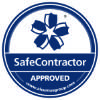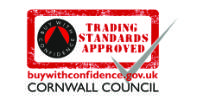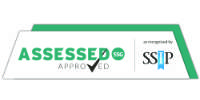Up to: < Risk assessment
Do I Need a Legionella Risk Assessment?
This depends on your premises and its use.

Who needs a Legionella risk assessment?
Are you a healthcare provider, business owner, a company director or a charity trustee? Do you have a water system? Your water systems may be simple or very complex and may include:
- A simple hot and cold water system that feeds taps and toilets at your site.
- Showers and baths.
- Spa pools and hot tubs.
- Sprinklers, hose reels, vehicle washers and decorative water features.
- Cooling towers and calorifiers.
- Spray humidifiers and dental equipment.
For a full list of at risk areas please refer to HSG274. The following sections should be checked:
- Part 1: The control of Legionella bacteria in evaporative cooling systems.
- Part 2: The control of Legionella bacteria in hot and cold water systems.
- Part 3: The control of Legionella bacteria in other risk systems. For example, hot tubs.
If you have answered yes to the above questions, then you need to understand the health risks associated with Legionella. Your starting point for becoming compliant is undertaking a Legionella risk assessment.
If you’re a healthcare provider, then you also need to be compliant to the ‘Health Technical Memorandum 04-01’.
Who should undertake your Legionella Risk Assessment?
The approved code of practice: ACoP L8 states that a competent person must complete the assessment. You may wish to become trained and competent in conducting risk assessments yourself. This could arguably save money but will potentially involve considerable investment of your time. A more popular option is to appoint an experienced consultant, who is P901 & P902 (or equivalent) qualified. Their expertise and experience will help to ensure that nothing is missed. Promoting safety and effective management of Legionella at your premises.
What is Legionella and why do you need to assess its risks?
Legionella is a bacterium that is present in soils and natural water systems. The conditions that encourage the growth of the organism include:
- Water temperatures between 20°C - 45°C.
- Any source of nutrients for the organism such as sludge, scale, rust and algae.
- Breathable water droplets created by equipment such as showers and spa pools.
Legionella bacteria causes Legionellosis…
In total around 50 species of Legionella have been identified. With L. pneumophilia being responsible for 90% of cases of Legionellosis.
Legionellosis was first identified in 1976. The identification followed an outbreak of the disease in Philadelphia. Over 220 people were infected, resulting in 34 deaths. Latest figures suggest that there are between 200-250 reported cases of Legionnaires disease each year in the U.K.
What environments are most at risk of spreading Legionella?
Some environments are more likely to spread Legionella. Data suggests that the settings below are more at risk from Legionella bacteria:
- Care homes
- Hotels and guest houses
- Spas and leisure centres
- Dental and G.P. surgeries
- Health care premises
- NHS facilities
- Schools, colleges and universities
- Commercial, manufacturing and distribution sites
You can minimise the risk of contracting Legionellosis by following the guidelines outlined in ACoP L8.
ACoP L8 provides practical guidance…
The Health and Safety Executive’s approved code of practice states that as an employer or a person responsible for a premises, you must understand and do the following:
- Identify and assess sources of risk. A thorough identification and assessment of all potential risk, carried out in accordance to ‘BS 8580: 2010 Water Quality Risk Assessment for Legionella control.’
- Manage any risks.
- Prevent or control any risks.
- Keep and maintain the correct records.
By appointing a competent person to complete your risk assessment you will meet point 1. Some consultancies provide other supporting Legionella services such as Legionella monitoring and cleaning. Partnering with a team that can offer these add-on services can assist you in meeting points 2-4.
How often does a Legionella risk assessment need to be reviewed?
Previous legislation detailed that a Legionella risk assessment should be reviewed every 2 years. This is no longer the case. It must be regularly reviewed to ensure it remains up to date.
What legislation dictates the need to have a Legionella risk assessment?
Your legal requirement to undertake a Legionella risk assessment is defined under the following legislation:
- The Health and Safety at Work Act 1974
- Management of Health and Safety at Work Regulations 1999
- Control of Substances Hazardous to Health Regulations



